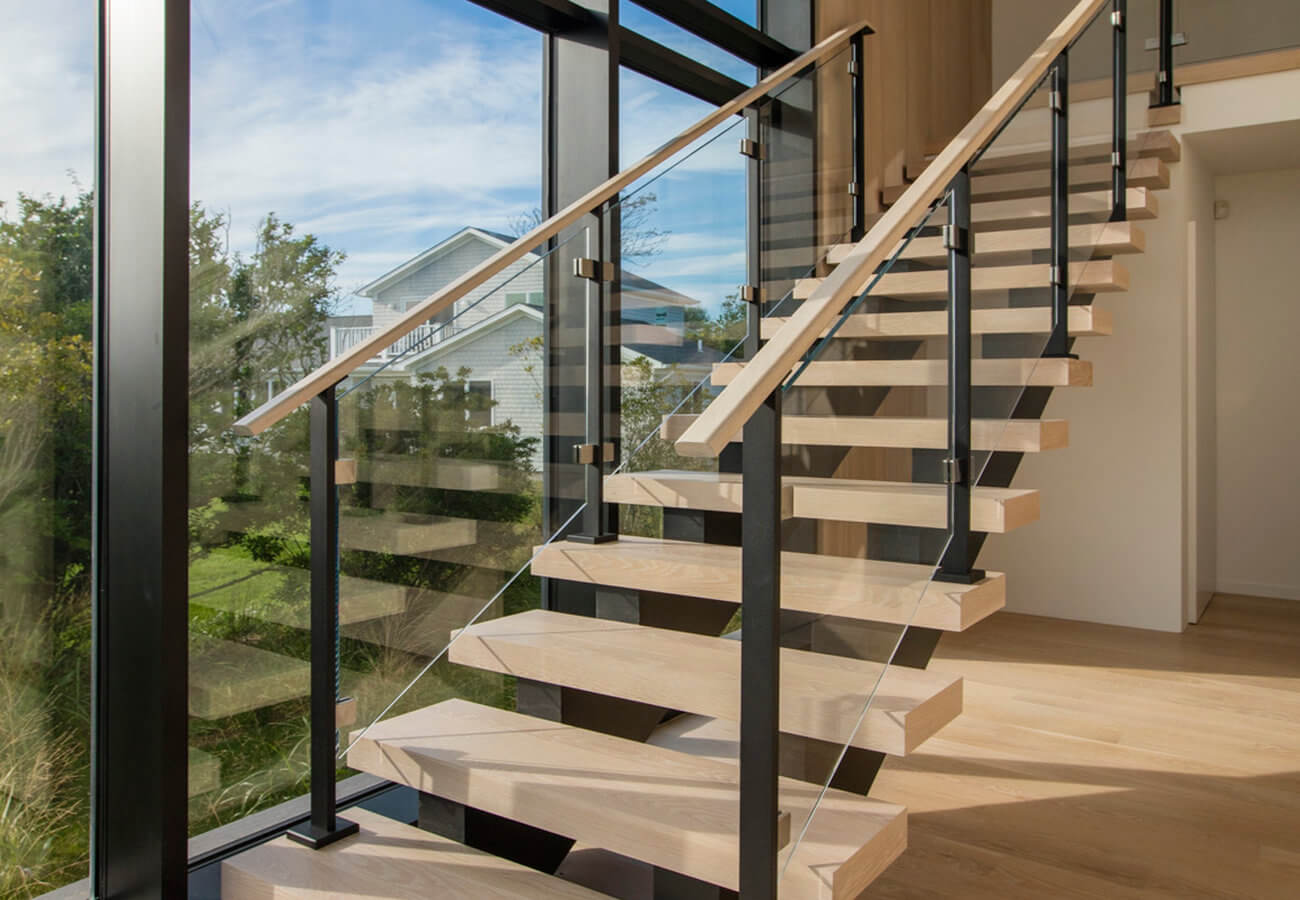

Articles
What Is One Flight Of Stairs
Modified: January 8, 2024
Discover the benefits of incorporating stair climbing into your fitness routine. Read our informative articles to learn more about the advantages of taking just one flight of stairs.
(Many of the links in this article redirect to a specific reviewed product. Your purchase of these products through affiliate links helps to generate commission for Storables.com, at no extra cost. Learn more)
Introduction
Welcome to the world of architecture and design, where every element and detail holds significance. One such element is the humble flight of stairs. While stairs are a common feature in buildings, it is essential to understand the nuances of a single flight of stairs.
A flight of stairs, often referred to simply as a “flight,” is a consecutive series of steps that connects two levels in a building. It plays a vital role in the functionality, safety, and aesthetics of a structure. Whether it’s in a residential home, office building, or public space, the design and construction of a flight of stairs require careful consideration.
In this article, we will delve deeper into the definition, physical characteristics, importance, types, design considerations, safety measures, maintenance, and benefits of a single flight of stairs. So, let’s take the first step and unravel the world of stairs!
Key Takeaways:
- Stairs are more than just a means of vertical circulation; they contribute to connectivity, aesthetics, physical activity, emergency preparedness, and inclusivity within buildings, enhancing the overall user experience and well-being.
- Incorporating stair climbing into daily routines offers a multitude of physical and mental health benefits, making it a convenient, accessible, and environmentally friendly form of exercise for individuals of all ages.
Read more: How Many Stairs Is 110 Flights
Definition of One Flight of Stairs
A flight of stairs is defined as a consecutive series of steps that connects two levels in a building. It provides a means of vertical circulation, allowing individuals to move from one floor to another. A single flight typically consists of multiple steps, handrails for support, and landings at the top and bottom.
Each step in a flight of stairs comprises a horizontal tread and a vertical riser. The tread is the part where you place your foot, while the riser is the vertical distance between each step. These dimensions can vary depending on building codes, design preferences, and the intended use of the stairs.
When defining a flight of stairs, it’s crucial to consider the total rise and the total run. The total rise refers to the vertical distance from the finished floor of the lower level to the finished floor of the upper level. The total run, on the other hand, refers to the horizontal distance covered by the flight. These measurements help determine the number of steps needed and the ratio between the rise and run.
Moreover, it is important to note that the term “flight” typically refers to a continuous series of steps without any intermediary floors or landings. However, in some cases, a flight may be interrupted by a landing midway. In such instances, it is considered as a part of the same flight if it continues in the same direction.
Now that we have a clear understanding of what a flight of stairs entails, let’s explore its physical characteristics and how it affects the design and functionality of a building.
Physical Characteristics of One Flight of Stairs
A single flight of stairs possesses several physical characteristics that contribute to its functionality, safety, and visual appeal. Understanding these characteristics is crucial for architects, designers, and builders to create staircases that meet both aesthetic and practical requirements.
One of the key components of a flight of stairs is the step itself. Steps consist of two main parts: the tread and the riser. The tread is the horizontal surface where individuals place their feet when climbing or descending the stairs. The riser, on the other hand, is the vertical height between each step. The dimensions of the tread and riser can vary based on local building codes, design preferences, and the intended use of the stairs.
The width of a step, also known as the going or run, is another important characteristic. It determines the amount of space available for people to walk comfortably on the steps. Building codes typically specify a minimum width for residential and commercial stairs to ensure safety and accessibility.
The pitch, or slope, of a flight of stairs is also a significant consideration. The pitch is the angle at which the flight ascends or descends. It affects the overall comfort and ease of using the stairs. Steeper pitches may require more effort to climb and can be challenging for individuals with mobility issues. A balanced pitch ensures a smooth and comfortable transition between the levels.
In addition to the basic components, handrails play a crucial role in the physical characteristics of a flight of stairs. Handrails provide support and stability to individuals using the stairs. They must comply with specific height and design guidelines to ensure safety for all users, particularly those with mobility limitations.
The presence of landings is another characteristic to consider. Landings are horizontal platforms located at the top and bottom of a flight of stairs, as well as at intermediate points in longer flights. They serve as resting places and can offer a transition between different sections of a building or changes in direction.
Lastly, the material used for constructing the stairs contributes to their physical characteristics. Stairs can be made from various materials, including wood, concrete, metal, or a combination of these. The choice of material depends on factors such as design aesthetics, durability, maintenance requirements, and budget.
Understanding the physical characteristics of a flight of stairs allows architects and designers to create staircases that provide optimal functionality, safety, and aesthetic appeal. In the next section, we will explore the importance of incorporating well-designed stairs in buildings.
Importance of One Flight of Stairs in Buildings
A single flight of stairs holds significant importance in the design and functionality of buildings. It serves as a vital means of vertical circulation, allowing people to move between different levels with ease. Let’s explore the key reasons why a well-designed flight of stairs is essential in buildings.
Connectivity and Access: Stairs provide a practical and accessible way for individuals to navigate through buildings. They connect various levels, enabling smooth movement and ensuring that spaces are interconnected and easily accessible. Whether it’s a residential home, office building, or public facility, incorporating a well-planned flight of stairs promotes efficient circulation and enhances overall functionality.
Aesthetic Appeal: Staircases have the potential to be architectural focal points, enhancing the visual appeal of a building’s interior. A thoughtfully designed flight of stairs can serve as a striking design element, adding character, elegance, and refinement to the overall space. Architects and designers often utilize creative designs, materials, and finishes to transform stairs into breathtaking features that leave a lasting impression on occupants and visitors.
Space Optimization: Stairs can also play a crucial role in optimizing space within a building. Whether it’s a compact residential building or a sprawling commercial space, an efficiently designed flight of stairs can help maximize the available area. Innovative staircase designs, such as spiral or floating stairs, can save space and create a sense of openness, making them ideal for small or crowded environments.
Physical Activity and Well-being: Climbing stairs is an excellent form of exercise that engages various muscle groups and promotes cardiovascular health. Incorporating a flight of stairs in a building encourages physical activity and helps individuals incorporate fitness into their daily routines. The convenience of having stairs readily available acts as a gentle reminder to choose the healthy option of climbing the steps instead of relying on elevators or escalators.
Emergency Evacuation: In times of emergency, staircases serve as crucial evacuation routes. They provide a safe and reliable means for occupants to quickly and efficiently exit a building. Designing stairs that meet strict fire safety codes and regulations ensures that individuals can evacuate the premises swiftly, reducing the risks associated with emergencies.
Inclusivity and Accessibility: It’s important to consider the needs of all building users, including those with mobility challenges. Integrating accessible design features, such as ramps, handrails, and proper lighting, ensures that everyone can use the stairs comfortably and safely. By creating inclusive spaces with well-designed flights of stairs, we promote equal access and enhance the overall user experience for individuals of all abilities.
In summary, a single flight of stairs is more than just a means of moving between levels. It plays a vital role in connectivity, aesthetics, space optimization, physical well-being, emergency preparedness, and inclusivity within buildings. By understanding the importance of incorporating well-designed flights of stairs, architects and designers can create spaces that are visually appealing, functional, and accessible.
Types of One Flight of Stairs
Flights of stairs come in various types, each with its own distinct characteristics and design considerations. Let’s explore some of the common types of flights of stairs found in buildings:
Straight Stairs: Straight stairs are the most basic and straightforward type. They consist of a single flight that ascends or descends in a straight line between two levels. Straight stairs are commonly found in residential homes, offices, and commercial buildings due to their simplicity and ease of construction.
L-Shaped Stairs: L-shaped stairs comprise two flights that join at a 90-degree angle, creating an “L” shape. This design allows for more flexibility in fitting the stairs into a building’s layout. L-shaped stairs are popular in homes and buildings with limited space, as they can make efficient use of corner areas and create a visually appealing design element.
U-Shaped Stairs: U-shaped stairs consist of two parallel flights that join with a landing in the middle, creating a U-shape. This design is commonly used in large homes and commercial buildings where a significant change in vertical elevation is required. U-shaped stairs provide a grand and spacious feel and often become a focal point of the interior design.
Spiral Stairs: Spiral stairs are characterized by a central column or post around which the steps wind in a circular or helical pattern. Spiral stairs are visually captivating and can create a sense of elegance and sophistication. They are often used in areas with limited space or as decorative features in homes, hotels, and historical buildings.
Curved Stairs: Curved stairs have a gentle arc or curve in their design, providing an elegant and graceful look. These stairs are custom-built to fit specific spaces and often require skilled craftsmanship. Curved stairs are commonly seen in high-end homes, luxury hotels, and prestigious buildings, as they add a touch of opulence and architectural beauty.
Floating Stairs: Floating stairs, also known as cantilevered stairs, create a visually stunning effect by appearing to float in mid-air. These stairs are designed with treads that are self-supporting, eliminating the need for visible risers or stringers. Floating stairs give a contemporary and minimalist look to both residential and commercial spaces.
Helical Stairs: Helical stairs have a flowing, curved design that follows a smooth and continuous curve from top to bottom. They are similar to spiral stairs, but with a broader profile and a more gentle ascent. Helical stairs are often used in spaces where a continuous, gradual flow is desired, such as museums, galleries, and high-end residences.
These are just a few examples of the types of flights of stairs found in buildings. Each type offers its own unique aesthetic appeal, spatial advantage, and design considerations. Architects and designers carefully consider the specific requirements of a building and the desired ambiance before selecting the most suitable type of flight of stairs.
Take one step at a time and use the handrail for support. Keep a steady pace and avoid rushing to prevent tripping or falling.
Read more: How Many Flights Of Stairs Is A Mile
Design Considerations for One Flight of Stairs
Designing a flight of stairs involves careful consideration of various factors to ensure that it meets functional requirements, safety standards, and aesthetic goals. Here are some key design considerations for creating a well-designed flight of stairs:
Building Codes and Regulations: Compliance with local building codes and regulations is crucial when designing a flight of stairs. These codes govern important aspects such as the minimum tread and riser dimensions, handrail specifications, headroom clearance, and overall safety requirements. Adhering to these guidelines ensures that the stairs meet safety standards and provide a comfortable user experience.
Space and Traffic Flow: Understanding the available space and anticipated traffic flow is essential for designing a functional flight of stairs. The overall dimensions of the staircase should be optimized to fit within the given space while providing sufficient clearance for comfortable movement. Factors such as the number of users, the purpose of the building, and the expected foot traffic influence the width of the stairs, the number of steps, and the arrangement of handrails.
Ergonomics: Considering the ergonomics of the staircase design is crucial for user comfort and safety. The dimensions of the tread (going) and riser should be carefully chosen to provide a comfortable and natural stride while ascending or descending the stairs. Balancing the going and riser dimensions helps to prevent fatigue and minimize the risk of tripping or falling.
Handrail Design: The design and placement of handrails are critical for user safety and support. Handrails should be continuous throughout the entire flight of stairs and should be positioned at a comfortable height for users of different heights. The material, shape, and finish of the handrails should not only comply with building codes but also harmonize with the overall design aesthetics of the staircase and the building.
Lighting: Adequate lighting is essential for ensuring visibility and safety on the stairs. Consideration should be given to the placement and intensity of lighting fixtures to eliminate dark spots and shadows. Integrating lighting elements into the design, such as recessed step lights or handrail lighting, can enhance both the functionality and ambiance of the staircase.
Material Selection: The choice of materials for the stairs greatly impacts both the aesthetic appeal and durability of the flight. Common materials used for stairs include wood, concrete, metal, glass, and stone. The selection of materials should take into account factors such as the architectural style of the building, maintenance requirements, durability, and budget.
Aesthetics and Visual Integration: Stairs play a significant role in the visual appeal and overall design harmony of a building. The staircase design should align with the architectural style and interior design of the space. Careful attention should be given to the selection of colors, finishes, and details to create a cohesive and visually pleasing integration with the surrounding environment.
Acoustics: The sound produced by footsteps on the stairs can impact the acoustic quality of the building. Incorporating appropriate sound-absorbing materials or design elements can help minimize noise and enhance the comfort of the users. Consideration should be given to the placement of sound-absorbing materials on walls, ceilings, or undersides of the stairs to optimize the acoustic experience.
By taking these design considerations into account, architects and designers can create a flight of stairs that combines functionality, safety, and aesthetic appeal. A well-designed staircase not only serves as a means of vertical circulation but also adds beauty and value to the overall architectural design.
Safety Measures for One Flight of Stairs
Ensuring the safety of a flight of stairs is of utmost importance to protect the users and prevent accidents. By incorporating appropriate safety measures, designers can create stairs that are not only functional and visually appealing but also promote a secure and comfortable experience. Here are some key safety measures to consider:
Handrails: Handrails are essential safety features on staircases, providing support and stability for users. They should be present on both sides of the stairs, with continuous railings throughout the entire flight. The handrails should be of an appropriate height, comfortable to grip, and capable of withstanding the required load. Building codes often specify the minimum dimensions and mounting requirements for handrails to ensure compliance with safety standards.
Tread and Riser Dimensions: The dimensions of the treads (going) and risers should be carefully designed to ensure a safe and comfortable user experience. Consistency in the height of risers helps prevent trips and falls, while appropriate tread depth allows for stable foot placement. Building codes define the acceptable range of tread and riser dimensions to ensure uniformity and compliance with safety standards.
Non-Slip Surfaces: Incorporating non-slip surfaces on the treads helps to prevent slips and falls, particularly in wet or slippery conditions. Non-slip materials or treatments can be applied to the tread surface to improve traction and reduce the risk of accidents. It is crucial to select materials that are durable, easy to maintain, and meet the necessary safety requirements.
Proper Lighting: Adequate lighting is essential for safe navigation on stairs. Well-lit stairs ensure clear visibility, helping users to identify potential obstacles, changes in elevation, or uneven surfaces. The lighting should be evenly distributed, with no dark areas or sharp contrasts that could cause visual distractions or disorientation. Lighting fixtures should be durable, energy-efficient, and positioned to minimize shadows and glare.
Clear Visibility: Designing stairs with clear lines of sight is essential to ensure user safety. Avoid obstructing the view of the stairs with bulky handrail designs, excessive decorative elements, or inadequate spacing between handrail balusters. A clear view of the steps and the path ahead allows users to anticipate their movements and navigate the stairs confidently.
Balustrade Safety: The balustrade or guardrail system on the stairs should be designed and installed to prevent falls over the edge. Baluster spacing should adhere to building codes to prevent the passage of a child’s head and body. The height of the guardrail should comply with safety regulations to provide adequate protection and support for users.
Reflective Markings: In public or dimly lit areas, reflective markings or contrasting colors can be used to highlight the edges of steps or changes in elevation. These markings improve visibility and help users identify potential hazards, especially when the lighting conditions are suboptimal.
Emergency Preparedness: In addition to general safety measures, incorporating appropriate emergency preparedness features on the stairs is crucial. Clear signage for emergency exits, proper evacuation routes, and strategically placed emergency lighting can guide users during emergencies or power outages. These measures ensure that the stairs remain a safe means of escape in critical situations.
Maintenance and Inspections: Regular maintenance and inspections of the stairs are essential to identify and address any potential safety hazards. This includes inspecting handrails for stability, checking for loose or damaged treads, repairing any non-slip surfaces, and ensuring proper lighting. Regular maintenance helps to ensure that the stairs remain in a safe condition for users at all times.
By implementing these safety measures, architects, designers, and builders can create stairs that prioritize the well-being and security of users. The combination of proper design, adherence to safety guidelines, and regular maintenance ensures that a flight of stairs remains a secure and reliable means of vertical circulation in buildings.
Maintenance and Upkeep of One Flight of Stairs
Maintaining and upkeeping a flight of stairs is crucial to ensure its longevity, reliability, and continued safety. Regular maintenance not only helps to identify and address potential issues but also preserves the aesthetic appeal and functionality of the stairs. Here are some key considerations for the maintenance and upkeep of a flight of stairs:
Cleaning: Regular cleaning is essential to keep the stairs free from dirt, dust, debris, and spills. Sweeping or vacuuming the treads and risers removes loose particles that could cause slips or falls. Stains or marks should be promptly addressed using appropriate cleaning agents or methods that are safe for the materials used in the staircase.
Inspections: Regular inspections are necessary to identify any signs of wear and tear, damage, or potential hazards. Inspections should include checking for loose treads, loose handrails, or any structural issues that may compromise the integrity of the stairs. These inspections should be carried out by trained professionals who can identify and address any maintenance needs.
Repair and Replacement: If any damage or defects are identified during inspections, it is essential to promptly repair or replace the affected components. This may involve fixing loose treads or risers, replacing worn-out or damaged handrails, or repairing any damages to the supporting structure. Timely repairs help to maintain the safety and functionality of the stairs.
Handrail Maintenance: Handrails should be regularly inspected to ensure that they are secure and in good working condition. Loose handrails should be tightened, and any signs of deterioration or damage should be addressed promptly. Handrails should also be cleaned to maintain their appearance and hygiene.
Graffiti and Vandalism: In public spaces or high-traffic areas, stairs may be subject to graffiti or vandalism. Promptly removing any graffiti or repairing vandalized areas is important for both the appearance and safety of the stairs. In such cases, cleaning methods that are appropriate for the materials used in the staircase should be employed.
Painting and Finishes: If the stairs are painted or have any finishes, periodic touch-ups or refinishing may be required to maintain their appearance. This is particularly important for exterior stairs exposed to the elements. The choice of paint or finish should be suitable for the specific materials used in the staircase.
Slip Resistance: If the stairs have non-slip surfaces, it is essential to periodically check and maintain their effectiveness. Over time, wear and tear or a buildup of dirt and grime may reduce the slip resistance of these surfaces. Regular cleaning and treating these surfaces with recommended products can help maintain their slip-resistant properties.
Accessible Design: For stairs that are designated as accessible or comply with accessibility guidelines, it is important to ensure that the required features and elements are maintained. This includes the condition and functionality of handrails, proper lighting, adequate contrast between steps and surroundings, and any other accessibility-specific requirements.
Follow Manufacturer’s Recommendations: It is important to follow the manufacturer’s guidelines and recommendations for maintenance and upkeep, especially for specialized stair components or materials. Manufacturers often provide detailed instructions on cleaning, maintenance, and the lifespan of their products, which can help prolong the durability and appearance of the stairs.
By prioritizing regular maintenance and following these upkeep considerations, the lifespan and functionality of a flight of stairs can be greatly extended. It is important to establish a maintenance schedule and carry out routine inspections and repairs promptly. By doing so, the stairs will continue to provide a safe and reliable means of vertical circulation while upholding their aesthetic appeal.
Benefits of Climbing One Flight of Stairs
Climbing a single flight of stairs might seem like a small feat, but it offers numerous benefits for both physical and mental well-being. Incorporating stair climbing into your daily routine is a simple and effective way to engage in regular physical activity. Let’s explore the many benefits of climbing one flight of stairs:
Cardiovascular Health: Stair climbing is a form of aerobic exercise that gets your heart pumping and increases blood circulation. By engaging in this activity regularly, you can improve your cardiovascular health, strengthen your heart muscles, and lower the risk of heart disease, high blood pressure, and stroke.
Muscle Engagement: Climbing stairs engages multiple muscle groups, including your quadriceps, hamstrings, glutes, calves, and core muscles. The repetitive action of climbing steps helps tone and strengthen these muscles, contributing to improved muscle definition and overall lower body strength.
Calorie Burn and Weight Management: Stair climbing is a calorie-burning activity that can help with weight management and weight loss goals. The effort required to climb stairs increases your metabolic rate, allowing you to burn more calories compared to walking or less intense activities. Over time, this can contribute to a healthier body weight and improved body composition.
Bone Health: The impact of climbing stairs can help stimulate bone growth and increase bone density, reducing the risk of osteoporosis and osteoarthritis. Weight-bearing exercises like stair climbing are beneficial for maintaining strong and healthy bones, especially for older adults who are more prone to age-related bone loss.
Improved Balance and Coordination: Climbing stairs requires balance and coordination as your body moves up and down. Regular stair climbing can improve your proprioception, which is your awareness of your body’s position and movement in space. This can enhance your overall balance and coordination, helping to prevent falls and reduce the risk of injury.
Mental Health Benefits: Physical activity, including stair climbing, has positive effects on mental health and well-being. Engaging in regular exercise releases endorphins, also known as “feel-good” hormones, which can improve mood, reduce stress, and boost overall mental well-being. The accomplishment of climbing stairs also provides a sense of achievement and self-confidence.
Convenience and Accessibility: One of the great advantages of climbing stairs is that it can be done almost anywhere and at any time. Unlike other forms of exercise that may require equipment or specific facilities, stairs are accessible in a variety of environments, including your home, workplace, or public spaces such as parks or buildings. Incorporating stair climbing into your daily routine is a convenient and time-efficient way to stay active.
Environmental Benefits: Choosing stairs over elevators or escalators is not only beneficial for your health but also for the environment. By opting for stair climbing, you reduce energy consumption and carbon emissions associated with elevator or escalator usage. This small lifestyle change contributes to a greener and more sustainable living.
Incorporating stair climbing into your daily routine can have numerous positive effects on your physical health, mental well-being, and the environment. Start by aiming to climb one flight of stairs whenever you have the opportunity and gradually increase the number of flights as your fitness improves. Remember to listen to your body, take breaks when needed, and enjoy the many benefits of this simple yet effective form of exercise.
Read more: How Many Feet In A Flight Of Stairs
Conclusion
In the realm of architecture and design, the humble flight of stairs plays an integral role in connecting spaces, enhancing aesthetics, and promoting functionality. Whether it’s a straight flight, an elegant spiral staircase, or a grand U-shaped design, each type of stairs brings its own unique characteristics to a building.
Throughout this article, we have explored the definition, physical characteristics, importance, types, design considerations, safety measures, and maintenance of a single flight of stairs. We have discovered that stairs are not mere functional elements but rather vital components that contribute to the overall experience and well-being of building occupants.
We have seen that stairs go beyond their primary purpose of vertical circulation. They provide connectivity, accessibility, and facilitate efficient traffic flow within buildings. Well-designed flights of stairs can also serve as visually captivating architectural focal points, adding elegance and charm to the interior spaces.
Moreover, stairs offer physical benefits by promoting cardiovascular health, muscle engagement, weight management, and bone strength. Engaging in stair climbing as a regular form of exercise has numerous advantages for physical fitness and overall well-being.
Safety measures are an essential consideration for any flight of stairs. Incorporating features such as handrails, adequate lighting, non-slip surfaces, and proper maintenance ensures user safety and minimizes the risk of accidents or injuries. Regular upkeep and inspections help to identify and address any potential issues, while complying with building codes and regulations guarantees the highest level of safety standards.
In conclusion, a flight of stairs goes beyond its basic function. It is an architectural element that combines form and function, adding beauty, connectivity, and convenience to buildings. By understanding the various aspects of their design, maintenance, and safety, architects, designers, and builders can create stairs that harmonize with the overall vision of a structure while prioritizing the well-being and safety of its occupants.
So, as you encounter a flight of stairs on your daily journey, take a moment to appreciate its significance. Whether you choose to climb the stairs for its physical benefits or simply admire its architectural beauty, let the flight of stairs remind you of the careful attention to detail and thoughtful design that goes into shaping our built environment.
Frequently Asked Questions about What Is One Flight Of Stairs
Was this page helpful?
At Storables.com, we guarantee accurate and reliable information. Our content, validated by Expert Board Contributors, is crafted following stringent Editorial Policies. We're committed to providing you with well-researched, expert-backed insights for all your informational needs.
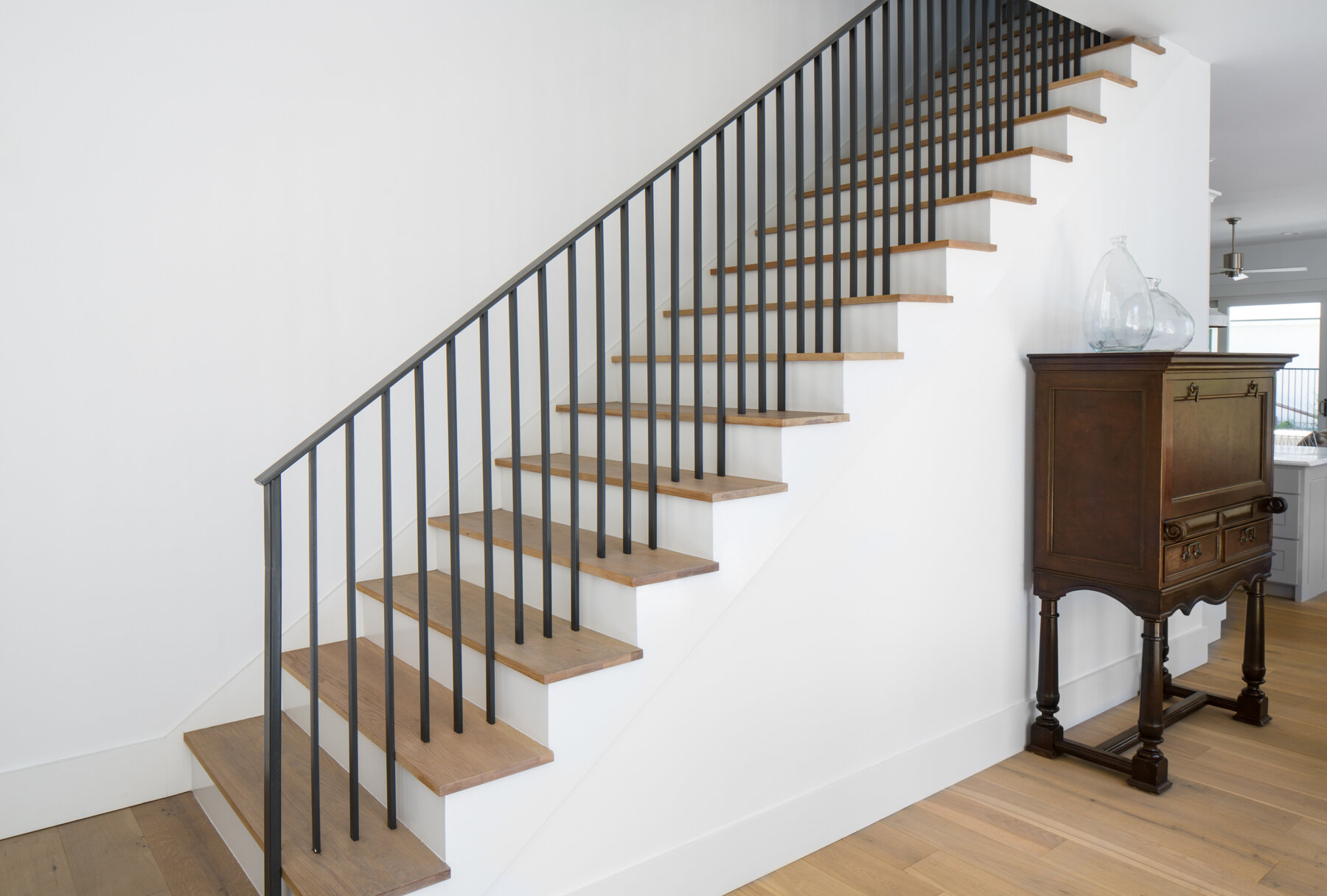
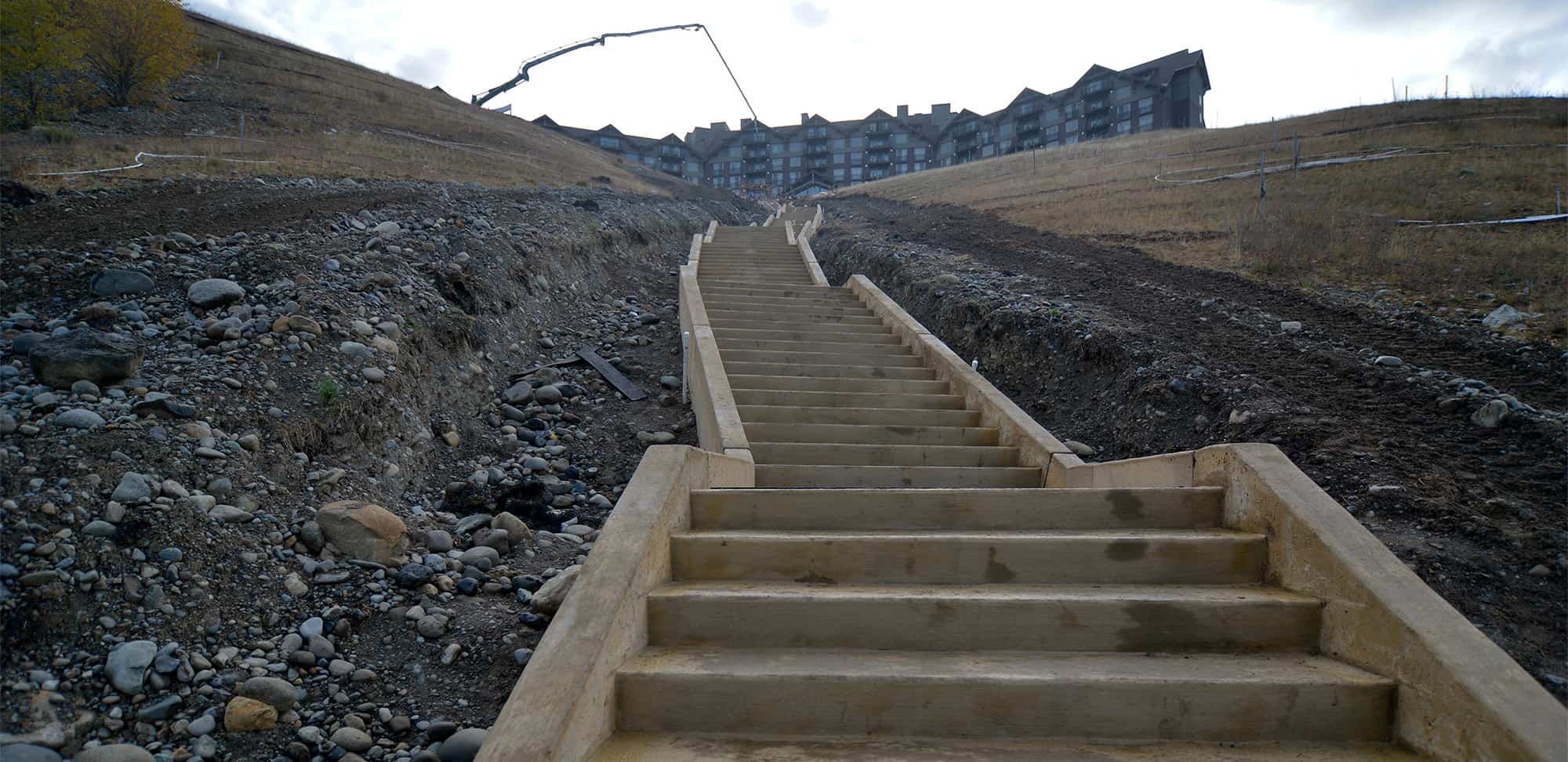


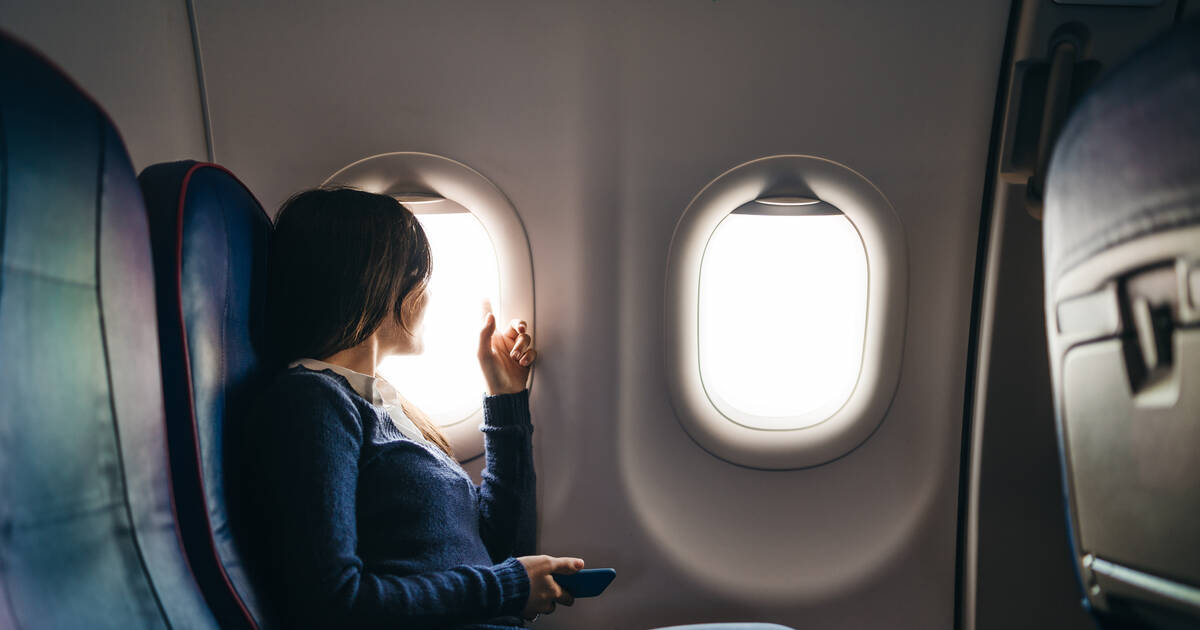
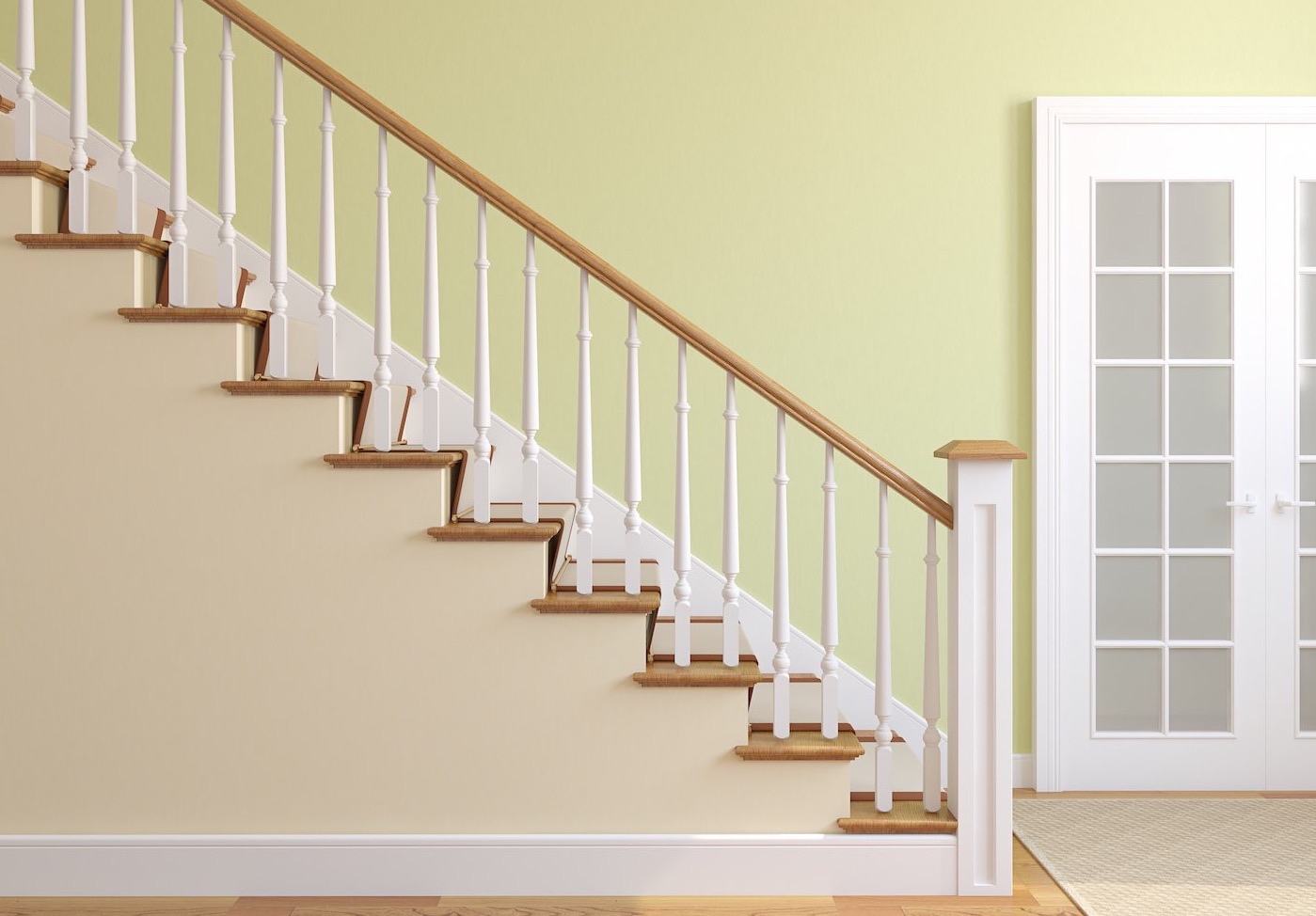
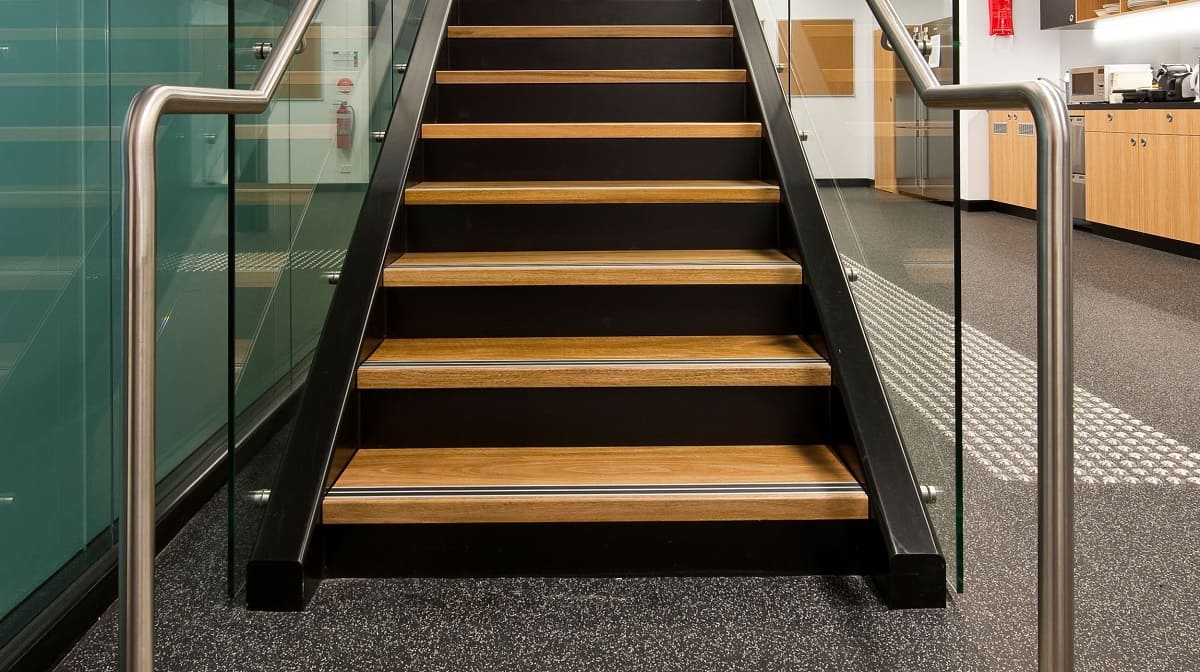

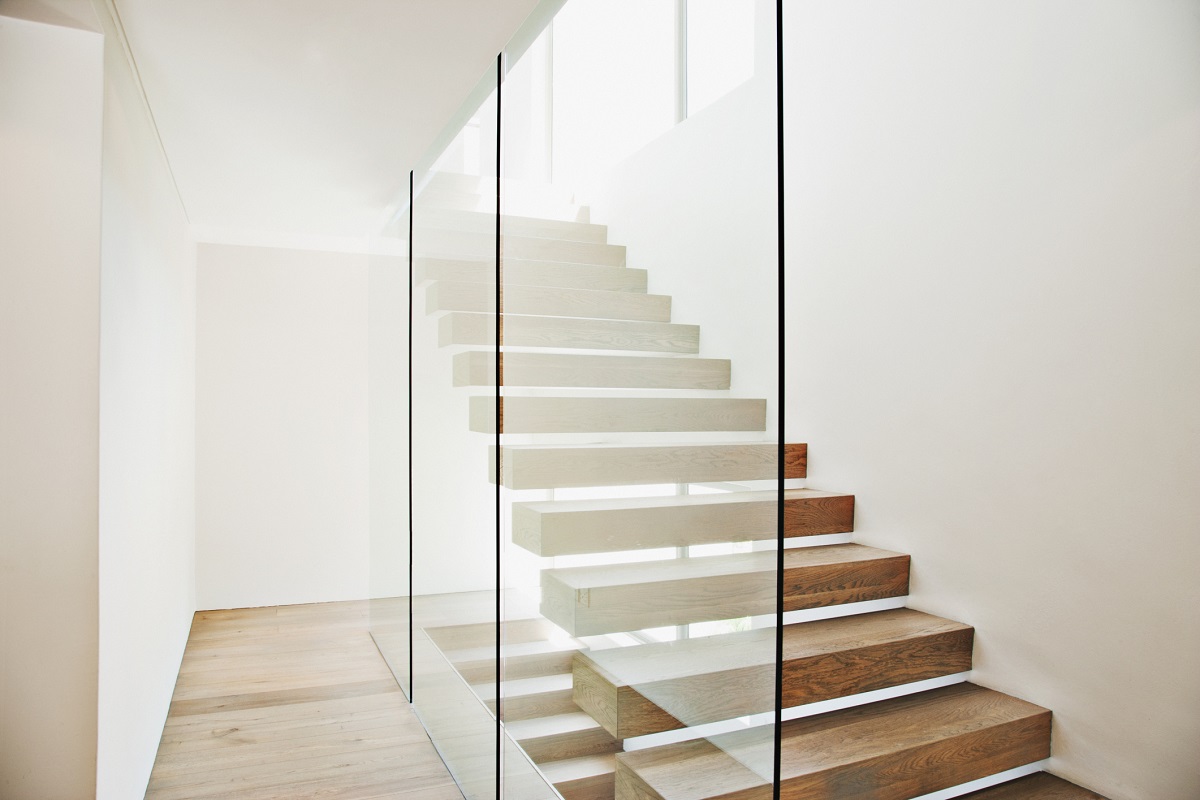
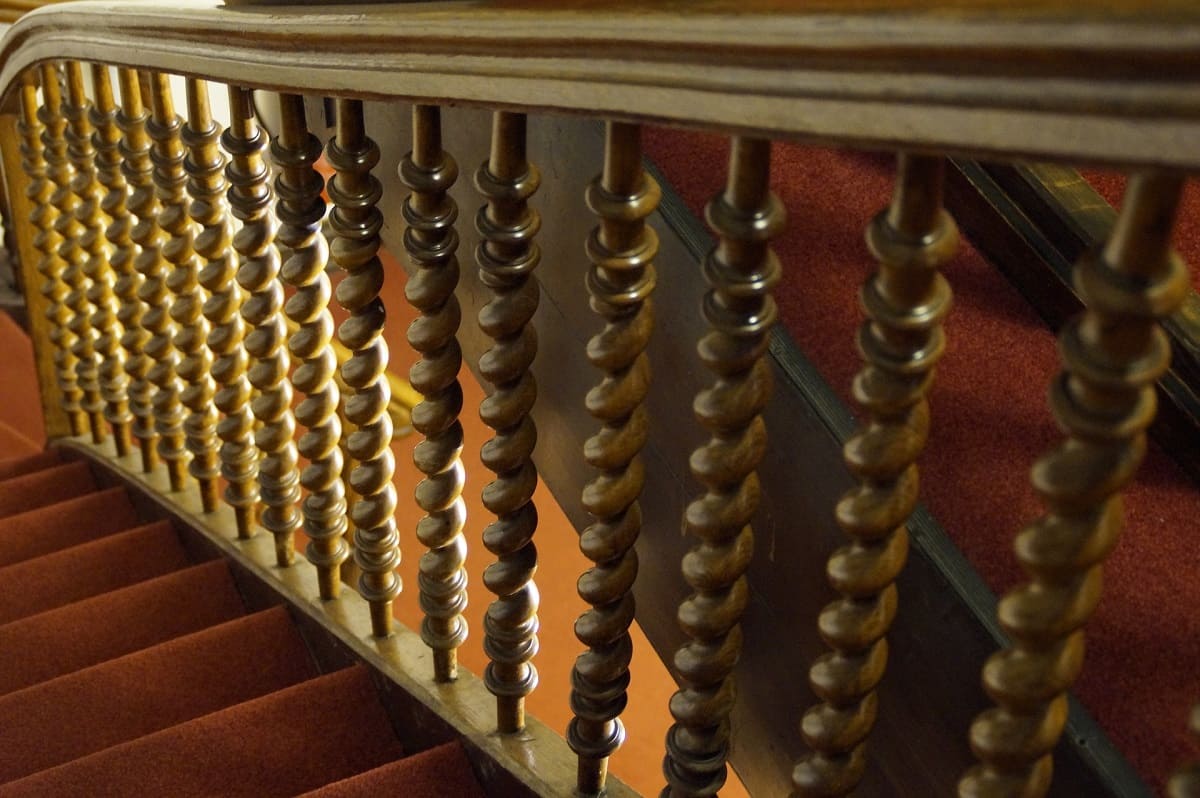
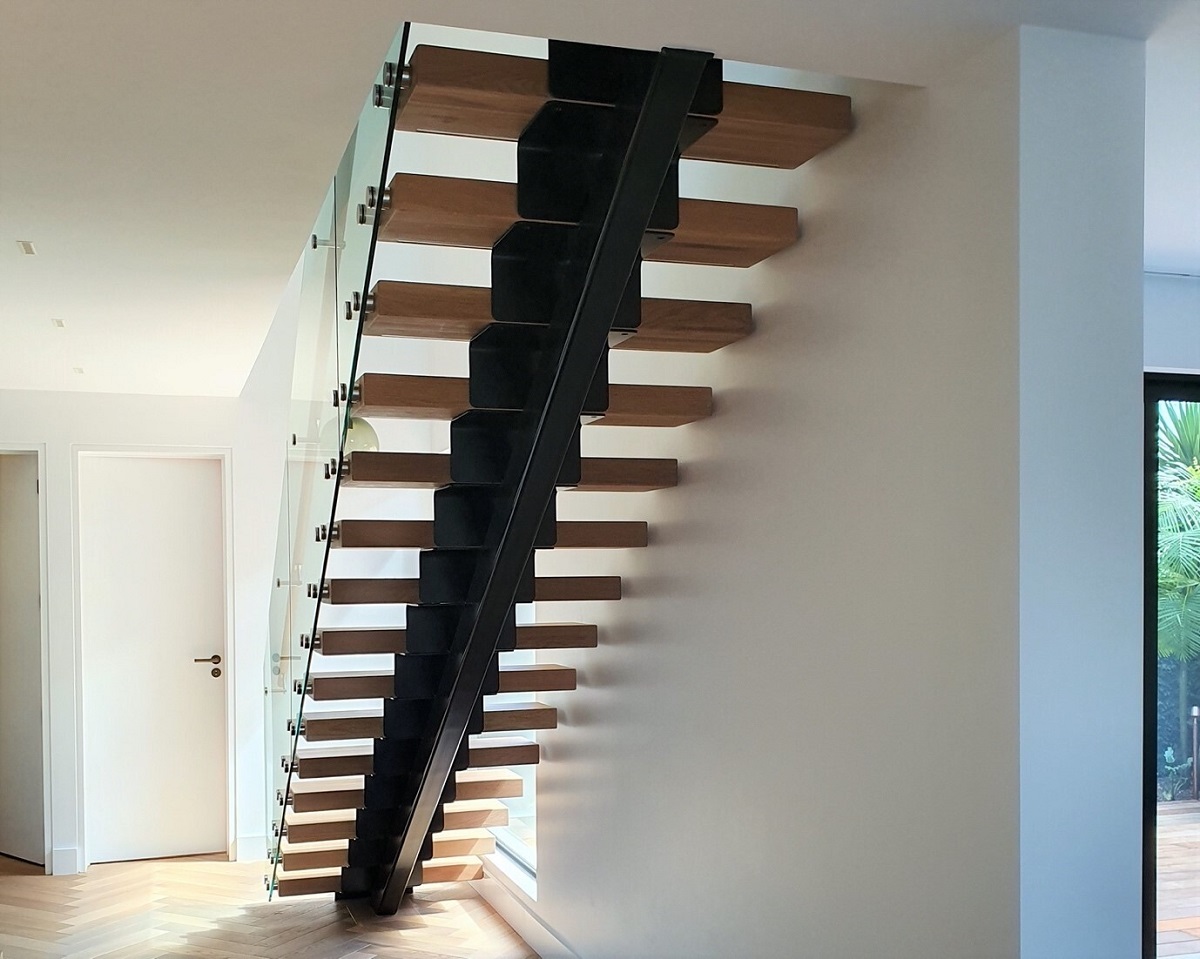
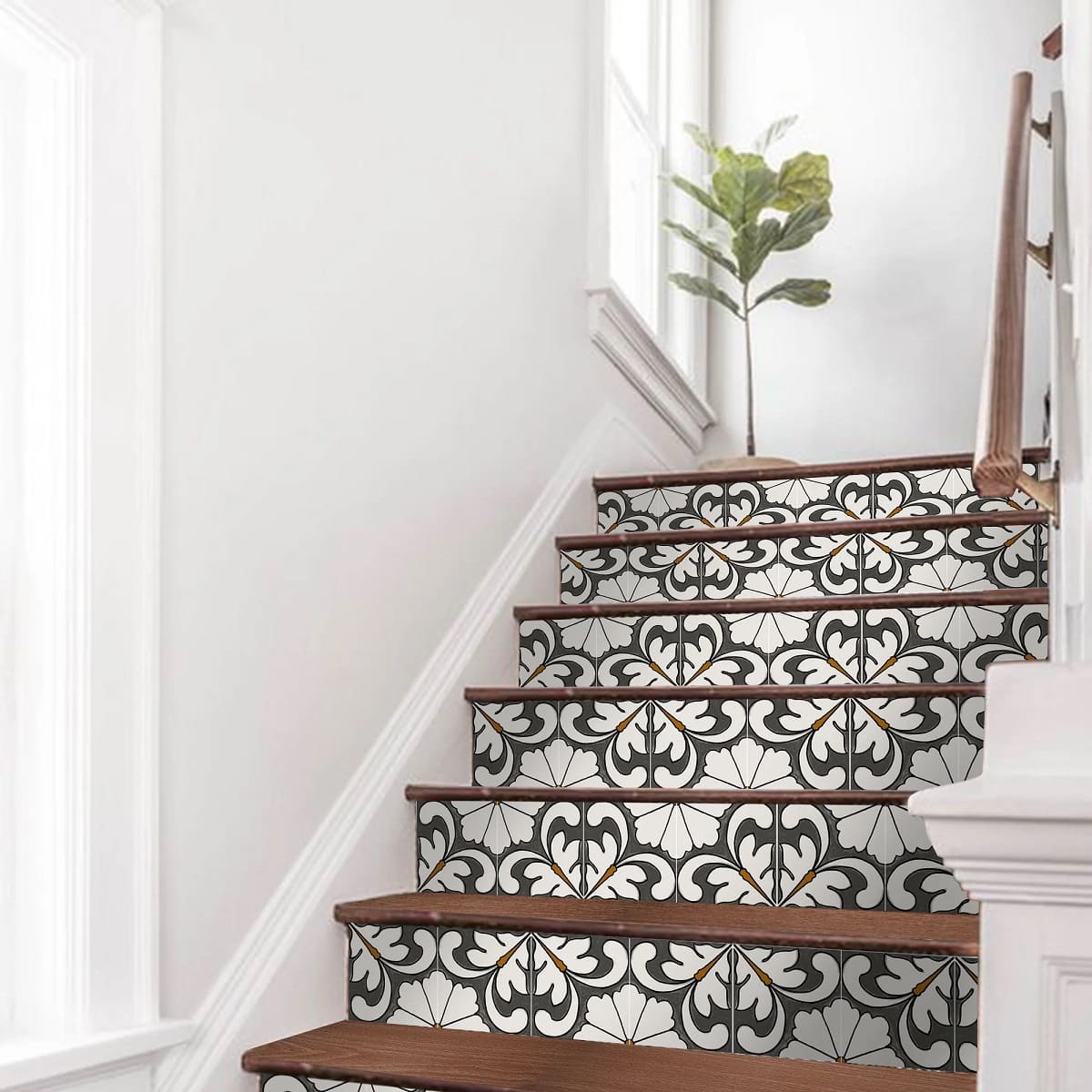


0 thoughts on “What Is One Flight Of Stairs”